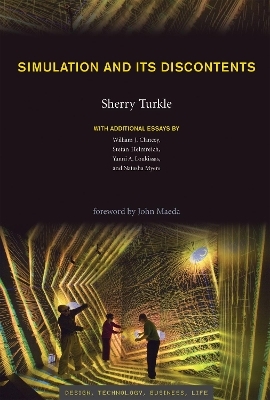
Simulation and Its Discontents
MIT Press (Verlag)
978-0-262-01270-6 (ISBN)
- Titel ist leider vergriffen;
keine Neuauflage - Artikel merken
Over the past twenty years, the technologies of simulation and visualization have changed our ways of looking at the world. In Simulation and Its Discontents, Sherry Turkle examines the now dominant medium of our working lives and finds that simulation has become its own sensibility. We hear it in Turkle's description of architecture students who no longer design with a pencil, of science and engineering students who admit that computer models seem more "real" than experiments in physical laboratories.
Echoing architect Louis Kahn's famous question, "What does a brick want?", Turkle asks, "What does simulation want?" Simulations want, even demand, immersion, and the benefits are clear. Architects create buildings unimaginable before virtual design; scientists determine the structure of molecules by manipulating them in virtual space; physicians practice anatomy on digitized humans. But immersed in simulation, we are vulnerable. There are losses as well as gains. Older scientists describe a younger generation as "drunk with code." Young scientists, engineers, and designers, full citizens of the virtual, scramble to capture their mentors' tacit knowledge of buildings and bodies. From both sides of a generational divide, there is anxiety that in simulation, something important is slipping away. Turkle's examination of simulation over the past twenty years is followed by four in-depth investigations of contemporary simulation culture: space exploration, oceanography, architecture, and biology.
Sherry Turkle is Abby Rockefeller Mauze Professor of the Social Studies of Science and Technology at MIT and Founder and Director of the MIT Initiative on Technology and Self. A psychoanalytically trained sociologist and psychologist, she is the author of The Second Self: Computers and the Human Spirit (Twentieth Anniversary Edition, MIT Press), Life on the Screen: Identity in the Age of the Internet, and Psychoanalytic Politics: Jacques Lacan and Freud's French Revolution. She is the editor of Evocative Objects: Things We Think With, Falling for Science: Objects in Mind, and The Inner History of Devices, all three published by the MIT Press. William J. Clancey is Chief Scientist of Human-Centered Computing in the Intelligent Systems Division at NASA Ames Research Center, and Senior Research Scientist at the Florida Institute for Human and Machine Cognition. Stefan Helmreich is Elting E. Morison Professor of Anthropology at MIT. He is the author of Alien Ocean, Sounding the Limits of Life, and Silicon Second Nature. Yanni Alexander Loukissas is Assistant Professor of Digital Media in the School of Literature, Media, and Communication at Georgia Institute of Technology. He is the author of Co-Designers: Cultures of Computer Simulation in Architecture.
| Reihe/Serie | Simplicity: Design, Technology, Business, Life |
|---|---|
| Co-Autor | William J. Clancey, Stefan Helmreich, Yanni Alexander Loukissas, Natasha Myers |
| Zusatzinfo | 10 figures; 10 Illustrations |
| Verlagsort | Cambridge, Mass. |
| Sprache | englisch |
| Maße | 137 x 203 mm |
| Gewicht | 408 g |
| Themenwelt | Informatik ► Grafik / Design ► Digitale Bildverarbeitung |
| ISBN-10 | 0-262-01270-7 / 0262012707 |
| ISBN-13 | 978-0-262-01270-6 / 9780262012706 |
| Zustand | Neuware |
| Haben Sie eine Frage zum Produkt? |
aus dem Bereich


